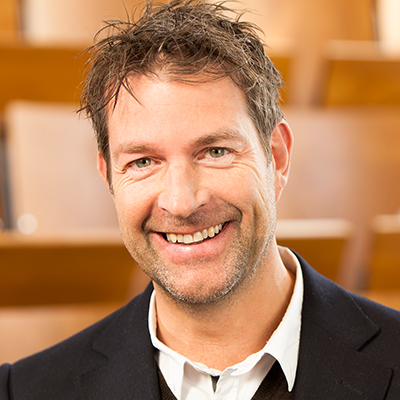“We want to prevent multiple sclerosis from causing damage to patients”

Prof. Wiendl, what scientific topic are you working on right now?
In my department doctors and scientists are working on almost 80 projects researching into the cause of multiple sclerosis (MS). We want to have a better understanding of the disease and, most of all, develop tailor-made therapies to provide targeted treatment for patients in future and prevent MS attacks. To achieve this, we have to know how the immune system communicates with the brain, how immune cells travel into the brain and why they cause damage there. As the disease behaves differently in every patient, we’re looking for individual patterns or signatures. To this end we’re working on so-called biomarkers. These are certain markers in the blood, for example, by means of which we doctors can see a growing inflammation in an MS patient’s brain. Such inflammations are responsible for MS attacks.
What’s your great aim as a scientist?
When we completely understand inflammatory diseases of the nervous system such as MS, we will be able to influence them in a targeted way. Actually, we’re already quite close to this point. The research that we doctors and scientists are engaged on here in Münster could be decisive for the treatment of MS patients and for monitoring their therapy, as well as for assessing the risk of side-effects. Unfortunately, there will always be the phenomenon of the “autoimmune disease”, so we won’t be able to fundamentally prevent patients succumbing to MS. What we do want, though, is to prevent the disease from causing damage. The aim is to achieve the best possible control over the disease, i.e. control which is as complete as possible.
What’s your favourite “toy” for research – and what can it do?
It’s a piece of technology which enables us to observe, multi-dimensionally, individual cells in motion: so-called flow cytometry. In this, individual cells flow at high speed past an electrical voltage and emit fluorescent colour markings. This enables us to register the properties of a cell. It’s a bit like in the CSI Miami TV series. We map cells and their function, and ultimately we distinguish between “good and evil”.
Can you remember your happiest moment as a scientist?
That was during my time as a post-doctoral student. For the first time, I created functioning molecules from information that I had on paper – or, to be more precise, I created a functioning T-cell receptor in a living cell.
And what was your biggest frustration?
There have been lots of those. Once I worked for months on trying to create a T-cell receptor … which then, unfortunately, recognized nothing – even though technically I’d done everything right. It just didn’t work.

